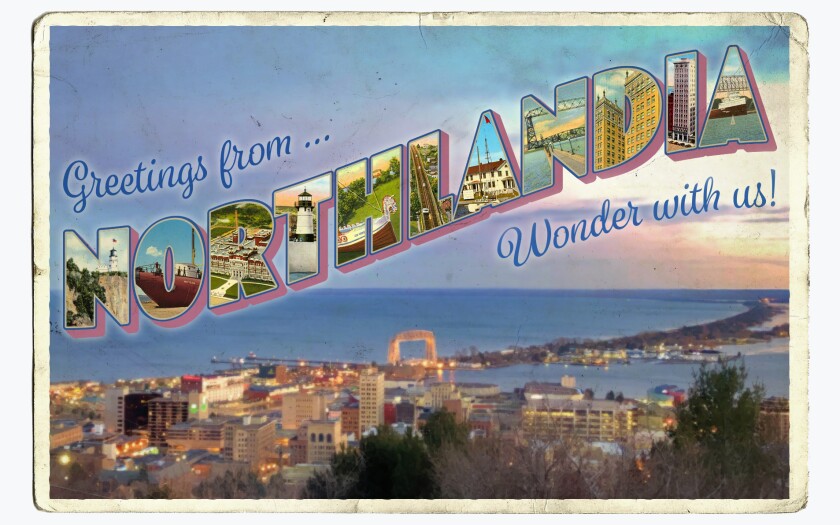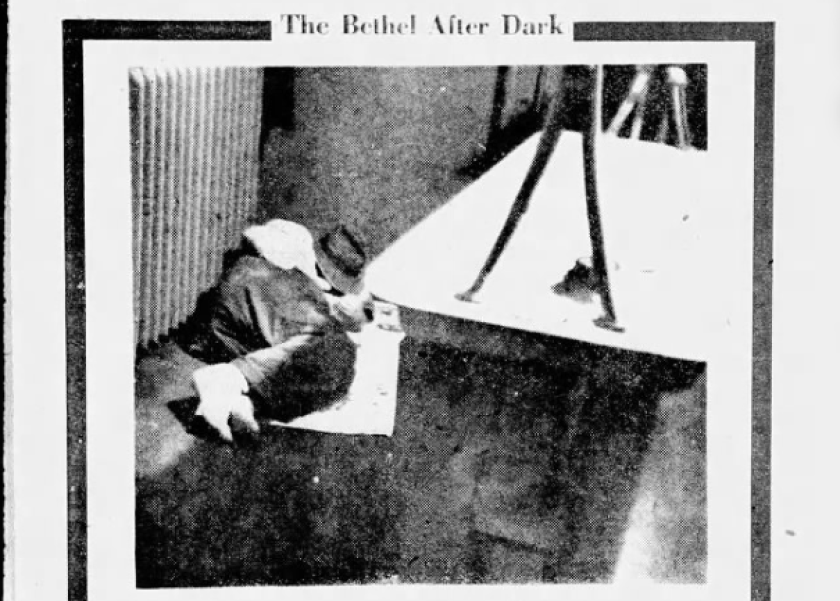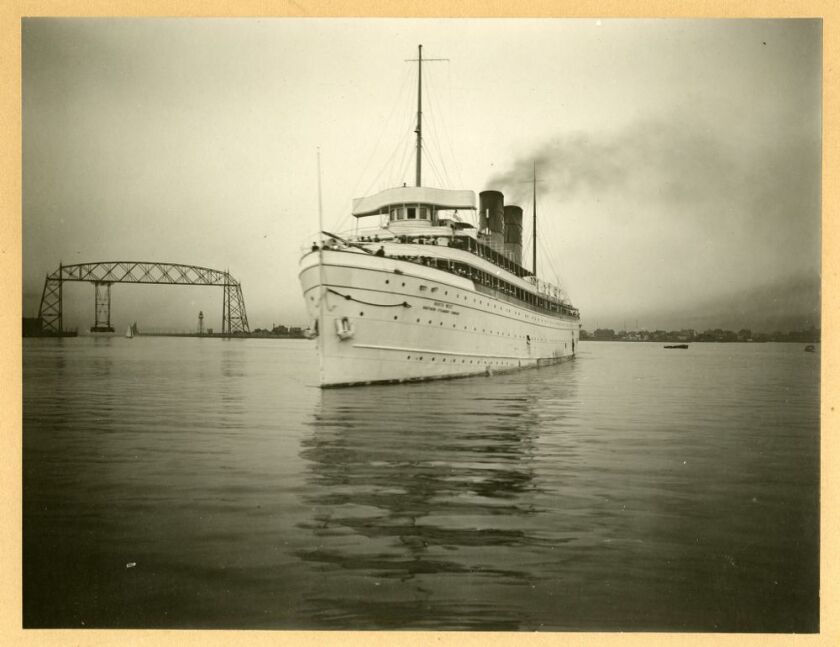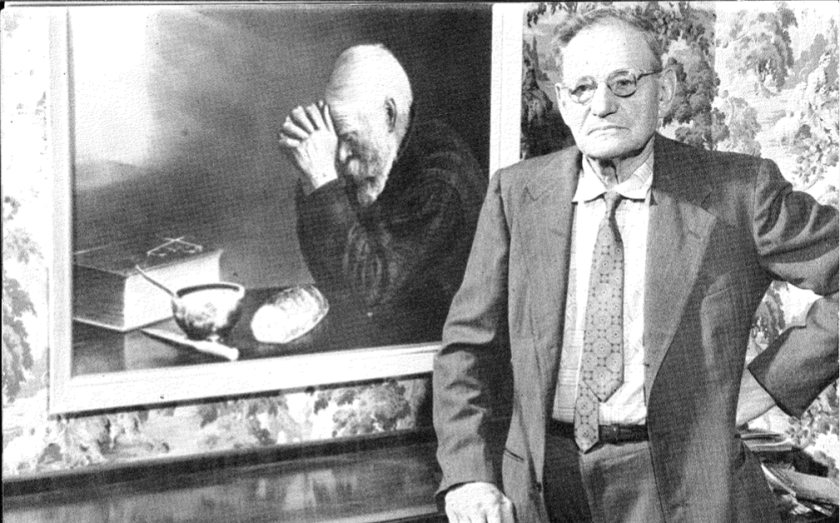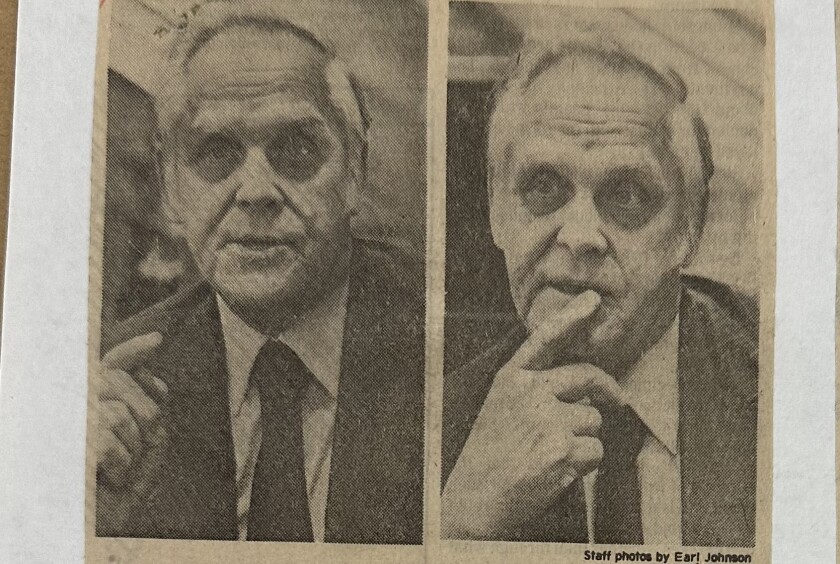PINE COUNTY — Archeologist David Mather had his doubts about a rock found in Pine County that reads “1679 DU LUTH."
It was discovered in the 1960s by a Ukrainian immigrant deer hunting on land he purchased near the watersheds of the Nemadji and St. Croix rivers. He had been using the rock as a deer stand when he scraped away moss to reveal the engraving.
ADVERTISEMENT
Could the Du Luth Stone have really been left by Daniel Greysolon, Sieur du Luth, the French explorer who, in 1679, traveled across Lake Superior and arrived at what is now his namesake city, Duluth, becoming the first known European to reach the area?
Or was this another hoax like the Kensington Runestone, which a farmer claims to have found near Alexandria in 1898 and whose believers claim was left behind by Vikings somehow traveling through west central Minnesota in the 14th century?

“I was very skeptical of it,” Mather, the National Register archaeologist for the Minnesota State Historic Preservation Office, said of the Du Luth Stone. “I thought it was likely a fraudulent thing. A lot of times, things carved on rocks are fake, but then as I thought about it more, I was kind of curious about why I so quickly just jumped to that conclusion and what was going on that would make me do that.”
In a recent article in the Minnesota Archaeological Society’s journal, The Minnesota Archaeologist, Mather wrote that the inscription has a better chance of being real than fake.
Mather considered if the inscription was made in two historical contexts: If it were authentic, it would be part of the historical context of French exploration in the region and the life of Du Luth, and if it were fake, it would be part of the historical context of the period after 1679.
“Comparison of evidence from these contexts suggests that there is a greater likelihood of the inscription being authentic than not,” Mather wrote.
Mather said it seemed to fit, or at least not contradict, what was happening during the fur trade.
ADVERTISEMENT
Du Luth and his party were led through the area by Indigenous guides, and Mather believes that if the inscription is, in fact, real, it was likely left by him or someone in his group, either as a reference point or to stake out a claim for a future fur post. He added that markings or monuments were occasionally left by European explorers in North America.

And, Mather said, Du Luth was in the area.
After arriving in present-day Duluth in 1679, Du Luth traveled by land to visit the Dakota at Mille Lacs. Then, in 1680, he traveled from Lake Superior up the Brule River and then portaged to the St. Croix River.
As for the possibility of it being fake? Mather said there is no evidence to support his initial gut feeling.
“There’s nothing that gives any suggestions that there’s any reason for someone to have created a fake inscription and then told no one about it,” Mather said. “And any argument for it to be fake, in my mind, became much more complicated and convoluted than an argument that it is likely genuine.”
The stone’s location has never been publicized, and its landowners in the past and present have never tried to promote it.
For many, the “DU LUTH” spelling on the rock was enough to dismiss its authenticity.
ADVERTISEMENT
After all, his name has been spelled many ways, including "Dulhut," "Du Lhut," "Du Lhu," "Du Lut," "Du L’hut," "De Luth" and "Du Lud."
But Mather wrote that Father Louis Hennepin, a Catholic priest and missionary in North America who Du Luth helped release from Dakota band captivity in 1680, used “Du Luth” and Du Luth himself used “du Luth” in the title of a 1685 report he wrote.
“Clearly, the spelling ‘Du Luth’ does not indicate that the inscription is inauthentic,” Mather wrote. “It is within the range of spellings historically known for Du Luth.”
The stone has been embraced by forensic geologist Scott Wolter, a 1982 University of Minnesota Duluth graduate and former Bulldog linebacker, who featured the stone in a 2014 episode of “America Unearthed.”
Wolter hosted four seasons of the show on the H2 (a sister station of the History Channel) and Travel channels and is president of American Petrographic Services in St. Paul. He said he was “thrilled” with Mather’s conclusion.
“Of course it’s authentic, and we can place Daniel Greysolon Du Luth in that exact area at that exact time,” Wolter said.
In a 2009 report, Wolter compared the Du Luth Stone and its carvings to nearby tombstones made out of the same Hinckley Sandstone in 1927. “The weathering of the Du Luth inscription is more advanced than the two sandstone monuments examined suggesting the carving is older than 1927," he concluded.
ADVERTISEMENT
But Wolter’s beliefs about the Du Luth Stone go much further. He suggested dots on the rock could be some sort of code, possibly part of a tradition that he said was passed down through the Freemasons and Knights Templar, a French order of Catholic knights from the Middle Ages.

Mather, who maintains the dots are small natural cavities in the sandstone, wrote that such ideas were “absurd” and an example of “pseudoarchaeology.”
“It is not my purpose here to ridicule the beliefs of others, but it is important to be clear that these ideas are absurd,” Mather said. “Pseudoarchaeology is part of the present day story of the Du Luth Stone, but it is unrelated to the real historic context of French exploration in North America."
Wolter said he’s been labeled a pseudoarchaeologist since the early 2000s when he studied the Kensington Runestone, maintaining it was real —despite mainstream researchers' rejection of it — and claiming that it was actually left in what is now Minnesota by the Knights Templar in the 1300s. (He also believes he found a dot code on the Runestone, and his 2014 episode of “America Unearthed” makes other comparisons between the Runestone and Du Luth Stone.)
“That’s when the trouble started, and I started hearing things like ‘pseudoarcheologist,’” Wolter said. “I’m like, ‘First of all, I’m not a f—ing archeologist. I’m a geologist, OK?’’
The key difference, Walter said, is that geology is a hard science while archeology is a humanities discipline.
Mather said pseudoarchaeology’s embrace of the Du Luth Stone made it a challenging subject to study.
ADVERTISEMENT
“It was awkward,” Mather said. “It’s the only time I’ve ever done anything like that, and I’d always been aware of pseudoarcheology in Minnesota, especially related to the Kensington Runestone, and tried to avoid it as best as I could.”
But if everything is just dismissed because it’s not understood, “potentially very significant” findings might be lost, Mather said.
“That’s why I ultimately wrote the article,” Mather said. “I thought, ‘Well, OK, that’s a useful contribution to just get that on record.’ Whether it convinces anyone is another question.”
This story was updated at 9:25 a.m. Jan. 24 with David Mather's title. He is the National Register archaeologist for the Minnesota State Historic Preservation Office. It was originally posted at 7 a.m. Jan. 24.
